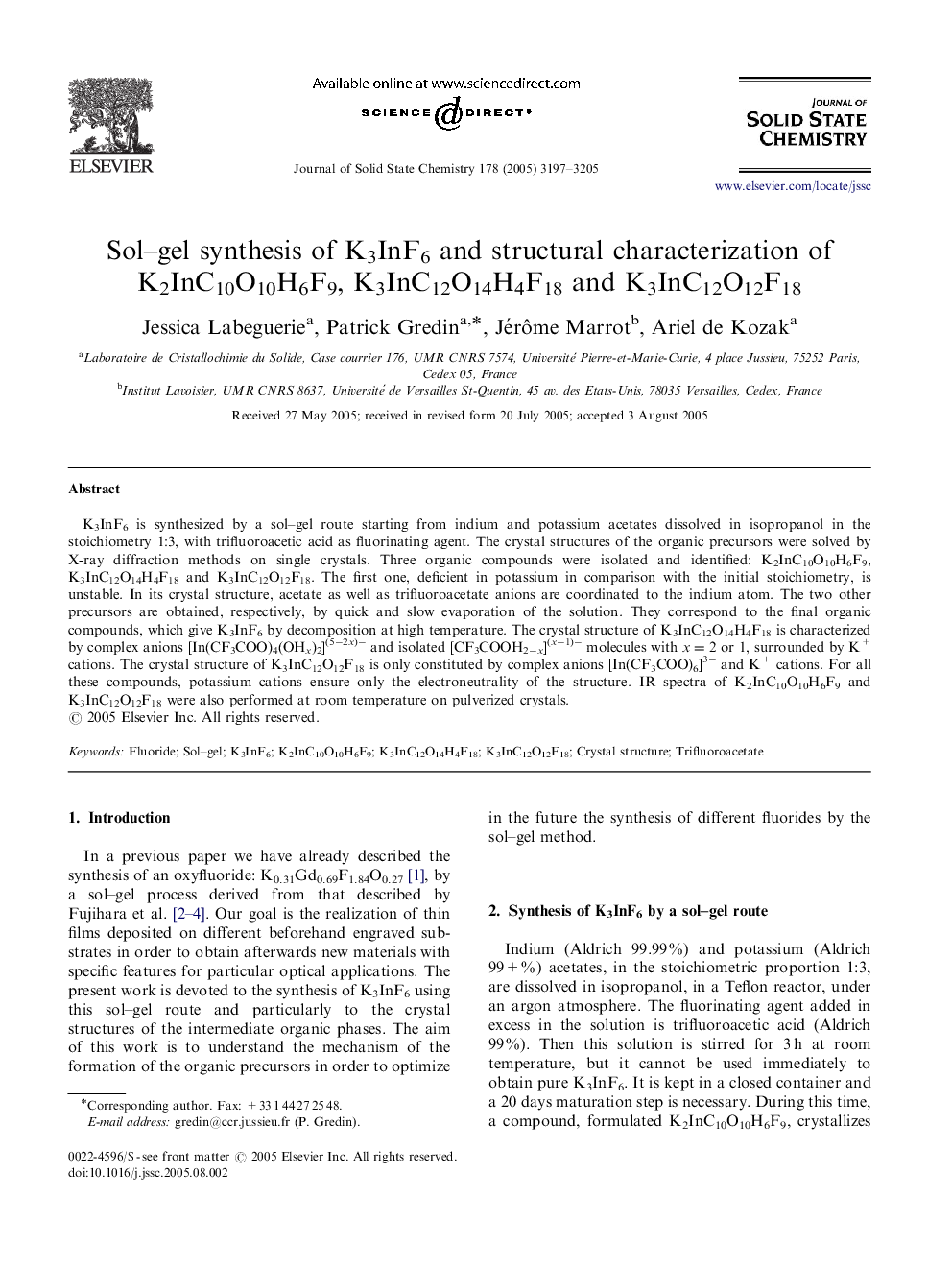| Article ID | Journal | Published Year | Pages | File Type |
|---|---|---|---|---|
| 1334116 | Journal of Solid State Chemistry | 2005 | 9 Pages |
K3InF6 is synthesized by a sol–gel route starting from indium and potassium acetates dissolved in isopropanol in the stoichiometry 1:3, with trifluoroacetic acid as fluorinating agent. The crystal structures of the organic precursors were solved by X-ray diffraction methods on single crystals. Three organic compounds were isolated and identified: K2InC10O10H6F9, K3InC12O14H4F18 and K3InC12O12F18. The first one, deficient in potassium in comparison with the initial stoichiometry, is unstable. In its crystal structure, acetate as well as trifluoroacetate anions are coordinated to the indium atom. The two other precursors are obtained, respectively, by quick and slow evaporation of the solution. They correspond to the final organic compounds, which give K3InF6 by decomposition at high temperature. The crystal structure of K3InC12O14H4F18 is characterized by complex anions [In(CF3COO)4(OHx)2](5−2x)− and isolated [CF3COOH2−x](x−1)− molecules with x=2x=2 or 1, surrounded by K+ cations. The crystal structure of K3InC12O12F18 is only constituted by complex anions [In(CF3COO)6]3− and K+ cations. For all these compounds, potassium cations ensure only the electroneutrality of the structure. IR spectra of K2InC10O10H6F9 and K3InC12O12F18 were also performed at room temperature on pulverized crystals.
Graphical abstractProjection of the crystal structure of the organic precursor of K3InF6: K3InC12O12F18.Figure optionsDownload full-size imageDownload as PowerPoint slide
